Ise Grand Shrine, the highest shrine in Japan.
Circumnavigating the sacred mountains of the gods.
In Japan, there are numerous shrines and temples. Among them, Ise Grand Shrine in Mie Prefecture holds significant importance. This time, we will introduce a route of about 20 kilometers that revolves around Ise Grand Shrine, deeply intertwined with history and culture. Starting from Chubu Centrair International Airport, we’ll cross to Mie Prefecture by ferry, pass through Ise Grand Shrine, and reach the goal at Toba Station.
Ise is often called the Land of the Gods. Along the way, you’ll encounter several torii gates. Torii gates signify the boundary between the world of gods and humans. When passing through a torii gate, stop just before and bow in reverence. Now, let’s embark on a ride to Ise Grand Shrine to savor Japanese culture.
Table of Contents
1. From Centrair to the Port
2. Head to Nagisamachi (Tsu) by High-Speed Ferry
3. The bicycle journey begins at Tsu Station.
4. Let’s go for the famous Ise Udon after all!
5. Visit to the Outer Shrine of Ise Grand Shrine
6. Experience the mystery at Ise Grand Shrine Inner Shrine.
7. Playing in the temple town of Ise.
8. I eat a 300-year history.
9. To Toba Station, our final destination.
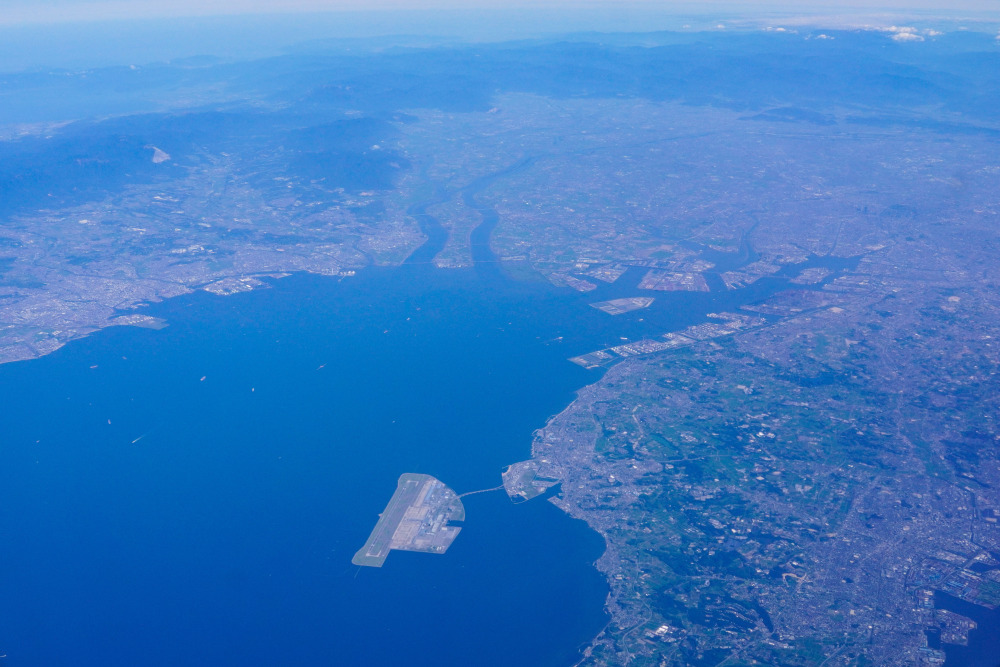
1. From Centrair to the Port
The journey begins at Centrair Airport. Despite the urge to unpack immediately, let’s endure and head not by land but by high-speed ferry to the port of Tsu City in Mie Prefecture, known as “Tsu Nagisa-machi.” By the way, “Tsu” means “harbor” in Japanese. When you think of Tsu, you imagine many waterfront areas, right? Now, connecting Centrair and Tsu is the “Tsu Airport Line,” a 45-minute one-way trip. Once you’ve picked up your luggage, head to the Access Plaza where the public transportation stop is located. Follow the signs for the “High-Speed Ferry Terminal,” and you’ll arrive in about 10 minutes.

2. Head to Nagisamachi (Tsu) by High-Speed Ferry
Purchase your ticket at the “Tsu Airport Line” terminal and board the ferry. The stable vessel, with a capacity of 108 passengers, leisurely departs from the port. Enjoy a brief ferry ride while gazing at the large cranes loading and unloading containers. While it’s nice to rest in the comfortable cabin, the high-speed ferry traveling at 30 knots (approximately 56 km/h) will quickly whisk you away to your destination.

3. The bicycle journey begins at Tsu Station.
From Nagisamachi to Tsu Station, take a taxi or bus. Utilize the Kintetsu Express Vista Car from Tsu Station, which has Japan’s shortest station name, to Ise-shi Station, with a travel time of about 30 minutes. Finally, we’ve arrived at the starting point of this bicycle journey. From Ise-shi Station, we’ll proceed to the Outer Shrine (Geku) and Inner Shrine (Naiku) of Ise Grand Shrine, then head to the finish line at Toba Station.
At the JR side exit of Ise-shi Station, you’ll find the Ise City Tourist Information Center. Additionally, there is a baggage storage service nearby. If your itinerary involves returning to Ise-shima Station, consider storing your luggage here. The baggage storage service also offers rentals for city bicycles and electric-assist bicycles.

4. Let’s go for the famous Ise Udon after all!
If you’re feeling hungry, I recommend trying Ise Udon. Ise Udon is a type of udon noodle that is two to three times thicker than regular udon noodles. Known for its satisfyingly thick noodles, it has been loved by travelers since the Edo period. Near the station, “Nadai Ise Udon Yamaguchiya,” established in the early Showa period, is a renowned eatery cherished by locals and travelers alike. Once you’ve savored the rich, black, and flavorful soy sauce broth with the thick and soft udon noodles, it’s time to set off.
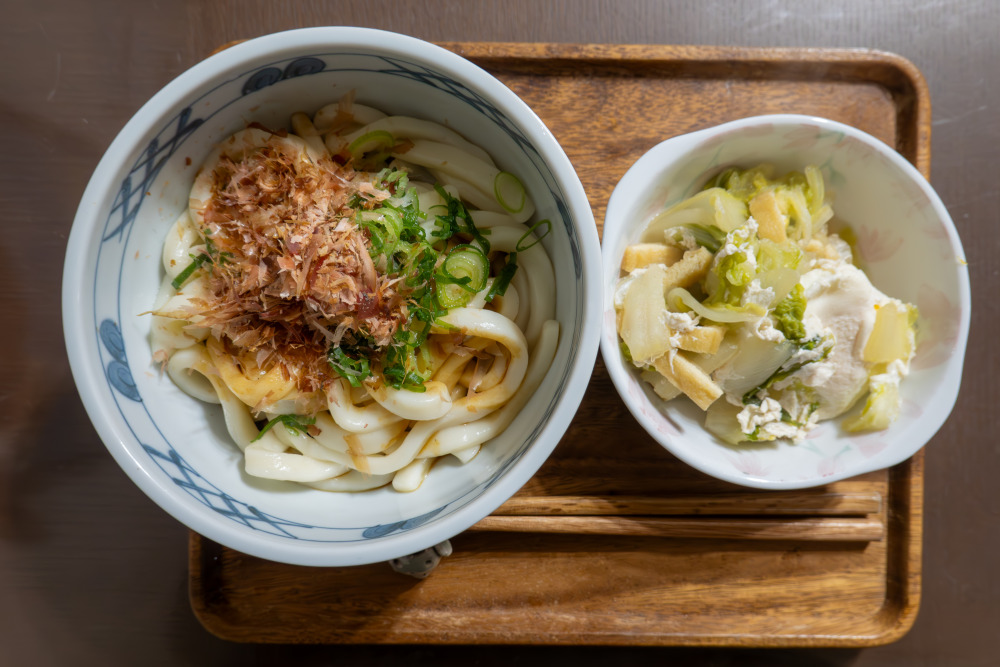
5. Visit to the Outer Shrine of Ise Grand Shrine
Once back at the station, let’s head first to the Outer Shrine (Geku) of Ise Grand Shrine. The shrine’s festival, known as “Geku Sensai,” begins at the Outer Shrine and follows a certain order. It has been customary since ancient times to visit the Outer Shrine first, followed by the Inner Shrine. Start by warming up your legs on Prefectural Route 201 from the JR side exit of Ise-shi Station.
After a while, you’ll see something resembling a forest on your right. That’s the Outer Shrine of Ise Grand Shrine. There’s a bike parking lot at the back of the main entrance. Let’s walk from here to pay our respects. Visiting hours start from 5 a.m., but the hours may vary depending on the season. It takes about 30 minutes to visit the Outer Shrine and about 60 minutes for the Inner Shrine, so please be mindful of your time allocation.
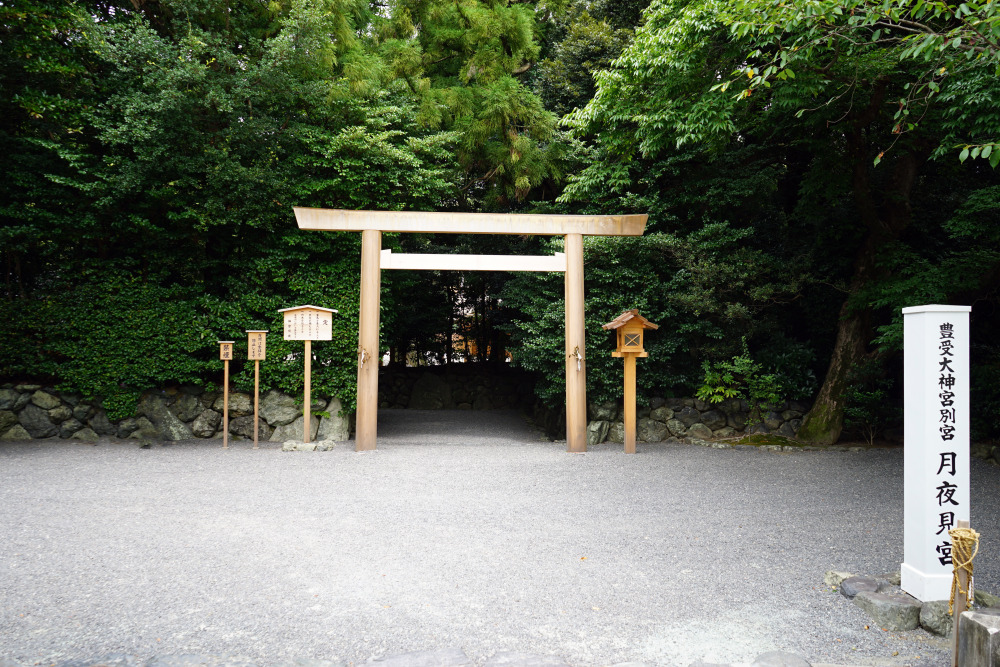
At the entrance to the sacred precinct flows a moat made for fire prevention, with a bridge called Hiyokebashi spanning it. Before paying your respects, purify yourself at the temizusha (water ablution pavilion). Further inside is the main shrine, Toyouke-daijingu, which enshrines the deity of agriculture, starting with clothing, food, and shelter. In front of it is the Kodenchi, where the palace stood until the last relocation. The Kodenchi quietly awaits the next relocation, making it a very mystical place.
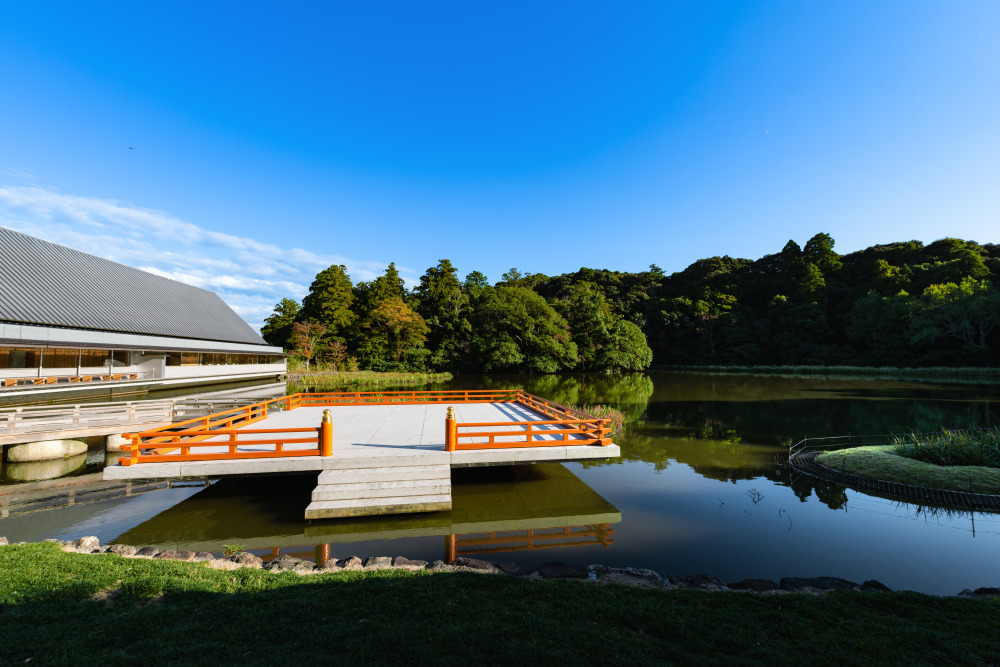
After worship, the building with a copper roof visible on the left side is the Outer Shrine Kagura-den. Here, you can receive prayers, omamori (amulets), and goshuin (sacred seals).
6. Experience the mystery at Ise Grand Shrine Inner Shrine.
Let’s head to our next destination, the Inner Shrine (Kou Daijingu). It’s approximately 4km away. The roads are well maintained, but since there are no dedicated bike lanes on the two-lane road, be cautious as you ride. As you pass under the Ise Expressway and approach the Ise Road (National Route 32), you’ll see a splendid shrine on your left. This is the Sarutahiko Shrine, dedicated to Sarutahiko Okami, who guides us in the right direction in all matters.
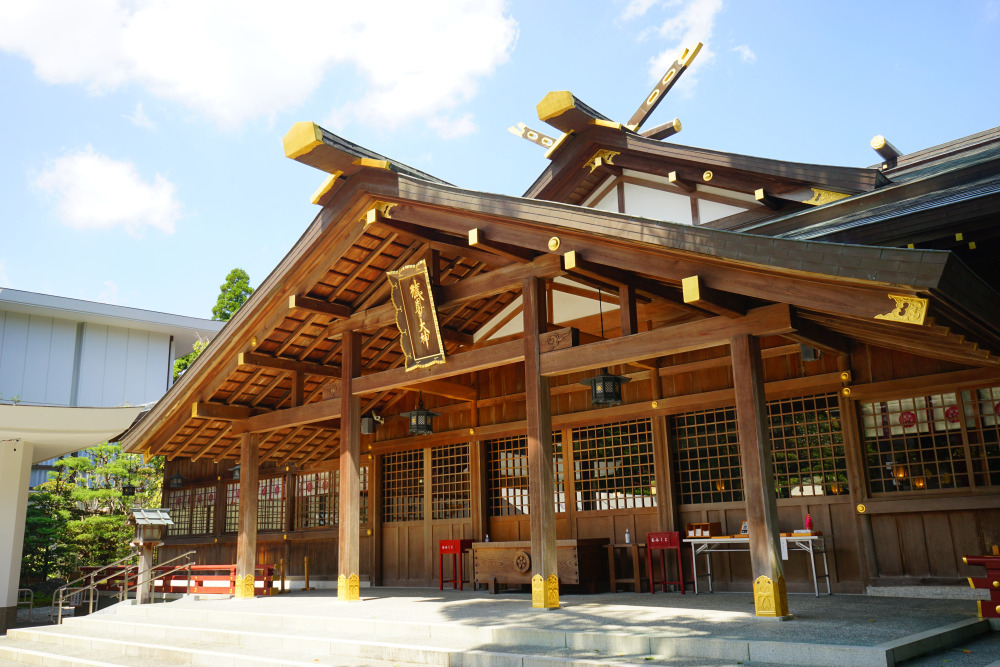
Keep going and make a right turn at the Ujiuratacho intersection where you’ll intersect with the Miyuki Road. This Miyuki Road was constructed to commemorate Emperor Meiji’s visit to Ise Grand Shrine in 1910, and it’s said to be the oldest paved road in Ise City with a rich history. Along the way to the Inner Shrine, you’ll find tourist spots like the Jingu Chokokan (Ise Grand Shrine Museum) and the Yamatohime Shrine, as well as cafes scattered around. On weekends and holidays, many people drive to visit the shrine, so there might be traffic congestion on some parts of the road. Be sure to stay cautious while cycling.

As you continue along the Miyuki Road, you’ll see the lush forests surrounding Ise Grand Shrine, covered in rich greenery on both sides. The designated bicycle parking area near Uji Bridge, spanning the Isuzu River, is where you can park your bicycle at the Inner Shrine.

Uji Bridge serves as the gateway to the Inner Shrine, bridging the everyday world with the sacred realm. The torii gate of Uji Bridge stands on both its outer and inner sides, a familiar sight to many. These torii gates are constructed from the main pillars of the former main hall of the Inner Shrine, serving as symbolic and beautiful structures that are indispensable when introducing the Ise Grand Shrine (as seen in the top photo).Passing through these two torii gates, you embark on your visit to the Inner Shrine. As you walk parallel to the Isuzu River, you’ll spot a temizusha (water ablution pavilion) to your right. Just like at the Outer Shrine, take a moment to purify your body and mind before proceeding. Turning left and continuing forward, you’ll soon catch sight of the Main Sanctuary, where the sun goddess Amaterasu Omikami is enshrined. When the wind blows, the white canopy of the Main Sanctuary sways gently, as if the gods themselves were passing by in silence.

7. Playing in the temple town of Ise.
After finishing your visit, head to Toba Station. Instead of the Miyuki Road you came through earlier, take the Ise Kaido Road near the Isuzu River. This Ise Kaido Road was sung about in the popular Edo period song “Ise Ondo” as “I want to go to Ise, I want to see the road to Ise,” and especially near the Inner Shrine, it’s lined with historic buildings and shops. As it’s a bustling temple town with many tourists, be particularly cautious. When you see the signboard of Akafuku, boasting 300 years of history in golden letters, take a stroll around. There’s a shopping street called Okage Yokocho, lined with souvenir shops and eateries. This street comprises over 50 shops, recreating the townscape of the Torii-mae town from the late Edo period to the early Meiji period, making it a tourist spot reminiscent of a time long past.

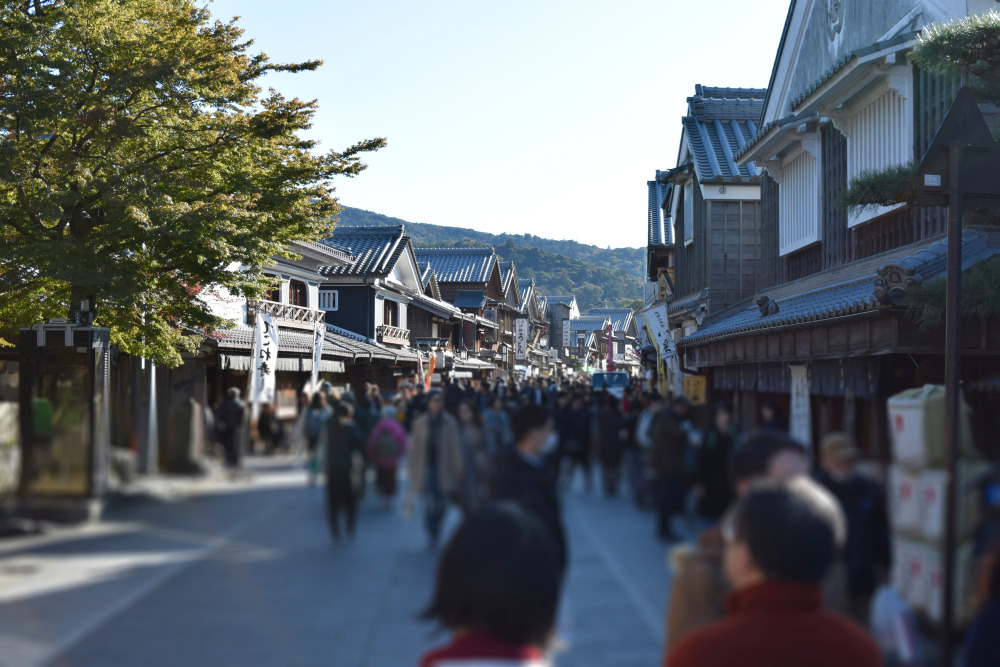
8. I eat a 300-year history.
Now, we can’t just pass by the famous Akafuku main store we saw earlier. Akafuku mochi, one of Ise’s specialties, is a sweet rice cake topped with sweet bean paste. Its shape represents the murmuring of the Isuzu River, with three lines on the bean paste symbolizing the clear stream, and the white rice cake representing the riverbed pebbles. Once you’ve satisfied your hunger, cross the Shinbashi Bridge over the Isuzu River and head to Toba Station.

9. To Toba Station, our final destination.
When crossing the bridge, you’ll see Urata Bridge over the Ise Road on your left. Immediately after crossing, make a left turn and proceed along the road alongside the embankment while keeping the Isuzu River on your left. After passing Urata Bridge seen earlier, cross the bridge over the Tachicho tori Line and continue main street. After a while, you’ll merge onto Prefectural Route 37, where you’ll make a right turn. Follow this road for about 8 kilometers until you reach the two-lane National Route 42. Be cautious as traffic increases compared to Prefectural Route 37. Turn right and proceed for 3 kilometers along National Route 42 until you arrive at Toba Station. Well done! (If you have time, you can go past the station and take the coastal road to visit Toba Aquarium, home to over 1,200 species of marine life, one of Japan’s leading aquariums!)
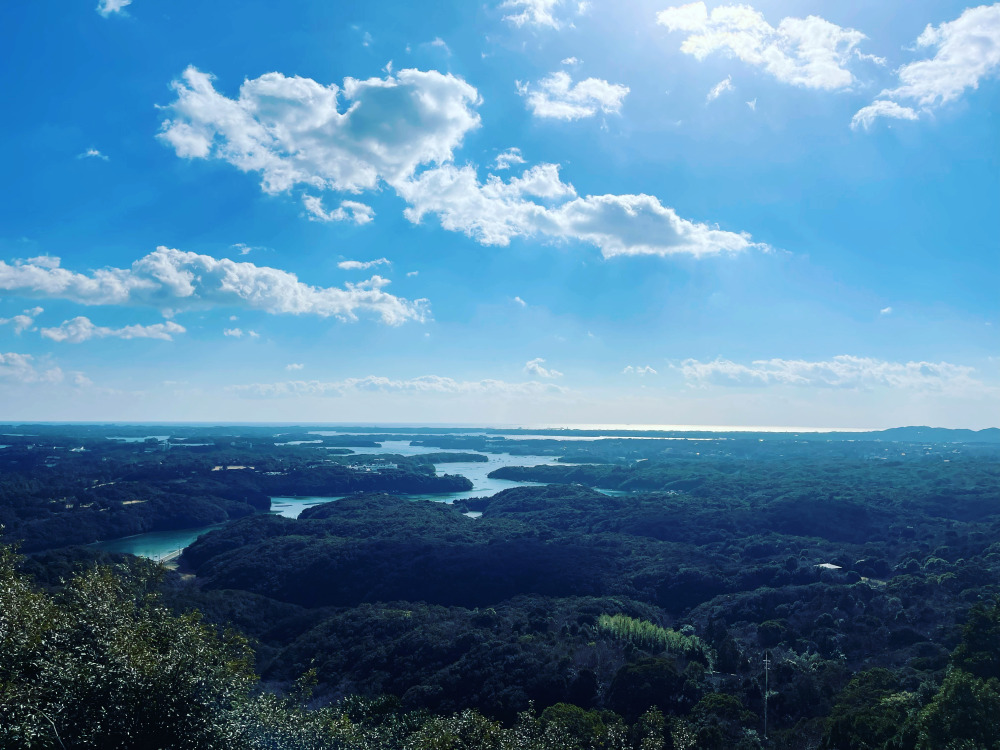
Reference Websites:
Centrair https://www.centrair.jp/en/
Tsu Airport Line https://www.tsu-airportline.co.jp/
Ise City Tourist Information Center https://ise-kanko.jp/
Yamaguchiya – Nadai Ise Udon http://www.iseudon.jp/
Ise Grand Shrine https://www.isejingu.or.jp/en/
Sarutahiko Shrine https://www.sarutahikojinja.or.jp/
Akafuku Main Store https://www.akafuku.co.jp/
Toba Aquarium https://aquarium.co.jp/en/
Profile
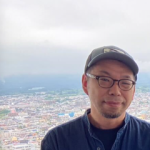
Text_Hideki Inoue
I am from Amagasaki City, Hyogo Prefecture, Japan. I work as a writer and editor. My hobbies include hot baths, skiing, and fishing. Although I have no personal connection, I am independently conducting research on Shiga Prefecture. I prefer an active fishing style called “RUN & GUN,” which involves moving around actively instead of staying in one place. Purchasing a car to transport bicycles for this style of cycling seems like putting the cart before the horse.